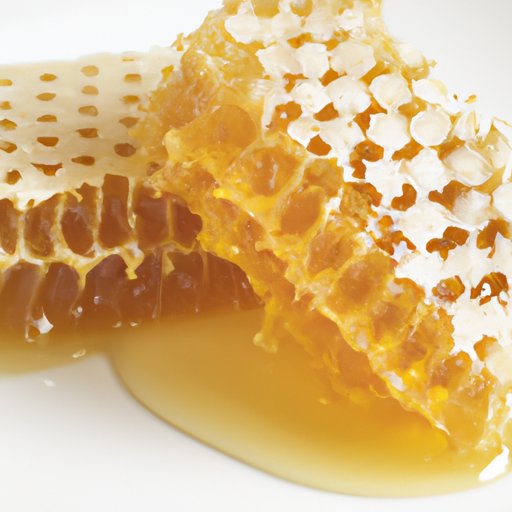
Introduction
Honeycomb is a unique, delicious, and nutritious treat that has been enjoyed by people for thousands of years. Made by bees, honeycomb is a waxy, hexagonal structure that contains honey and pollen. It is not only a fascinating natural wonder but also a healthy food that offers an array of health benefits. In this article, we will explore the best ways to eat honeycomb and why you should include it in your diet more often.
Health benefits of Honeycomb
Honeycomb is packed with nutrition and offers several health benefits. It contains antioxidants, vitamins, and minerals that help boost your immune system, fight diseases, and promote overall wellness. Honeycomb is also known to have antibacterial and anti-inflammatory properties, making it an excellent remedy for sore throats and coughs. While raw honey is already healthy, honeycomb is even more nutritious because it contains beeswax, which is rich in vitamin A and can support healthy skin and vision.
If you suffer from seasonal allergies, eating local honeycomb can help you build up immunity to pollen. Local honeycomb is also known to have antibacterial properties that make it a natural remedy for digestive issues such as ulcers, bacterial infections, and irritable bowel syndrome. But be aware that honeycomb contains a lot of natural sugars, so it should be consumed in moderation.
When compared to raw honey, honeycomb has a distinct texture that makes it a delightful treat. While raw honey can be easily dripped onto food or stirred into drinks, honeycomb requires a little more effort to enjoy. In the following sections, we will explore how to cut and serve honeycomb and offer suggestions on how to enjoy it.
Best way to cut and serve Honeycomb
Although honeycomb looks intimidating and hard, it is relatively easy to serve and handle. Here is a step-by-step guide on how to cut and serve honeycomb:
- Remove the honeycomb from the package and place it on a clean surface.
- Use a sharp knife or kitchen shears to cut the honeycomb comb into sections. Cut off one corner or side carefully, so you don’t break the honeycomb.
- Cut the comb into small pieces, about 1-2 inches, depending on your preference.
- Place the honeycomb pieces on a plate, making sure that any honey drips onto the plate.
When serving honeycomb, you can eat it as is, add it to a cheese plate, sprinkle it on yogurt, or use it to sweeten your tea or coffee. The texture of honeycomb is unique, it has a slightly crunchy texture and a chewy consistency. The wax can be chewed, but some people prefer to spit it out. Don’t be intimidated by the wax; it is entirely safe to eat and digest.
Different honey varieties and its taste
Honeycomb can taste different depending on the type of honey used and where the bees sourced the nectar. Some popular types of honey that can affect the flavor of honeycomb are:
- Acacia honey: has a delicate, floral taste and a light color.
- Manuka honey: has a strong, earthy taste and a thick texture. It is known for its antibacterial properties.
- Clover honey: has a mild, sweet taste and a light color. It is one of the most common types of honey available.
- Buckwheat honey: has a bold, molasses-like taste and a dark color.
If you are interested in exploring the different types of honey, try a honey tasting experience. You can buy a sample pack of different honey varieties or visit local farmers’ markets to taste them in person.
DIY Recipe using Honeycomb
Honeycomb is a versatile ingredient that can be used in various recipes. Here are a few simple but delicious ideas:
- Honeycomb Toast: Toast a slice of bread, spread some butter, add a layer of honeycomb and enjoy!
- Honeycomb Yogurt: Add some honeycomb pieces to your yogurt to add texture and flavor.
- Honeycomb Glazed Pork: Combine honeycomb with soy sauce, garlic, ginger, and vinegar to make a glaze for pork ribs.
When using honeycomb in recipes, keep in mind that it is relatively sweet and can affect the overall sweetness of the dish. Adjust the amount of sugar accordingly.
Pairing with food and drinks
Honeycomb can be paired with a variety of foods and drinks. Some popular combinations are:
- Cheese: Honeycomb pairs well with cheese, particularly blue cheese and brie.
- Tea: Add honeycomb to black tea or herbal tea for a sweet and aromatic drink.
- Charcuterie: Add honeycomb to your charcuterie board for a touch of sweetness.
Conclusion
Honeycomb is a delicious and nutritious treat that can offer an array of health benefits. It is easy to serve and can be enjoyed in many different ways. Its unique texture and flavor make it an exciting ingredient to experiment with in the kitchen.




